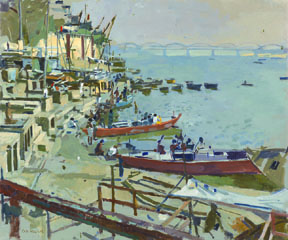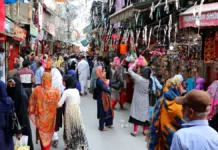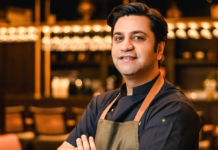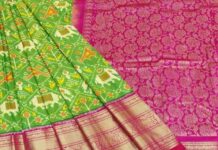
Mark Twain wrote of Varanasi: “It is older than history, older than tradition, older even than legend…………
This year four British artists took themselves off as a group to Varanasi in India to capture the light, heat, people, buildings and landscapes and something of the way in which India seduces the visitor. The result is a stunning contemporary look at this most fascinating of Indian cities which is on view as an exhibition in London this October alongside a TV documentary that has also been made of their trip.
The stunningly vibrant works of Ken Howard, Patrick Cullen, Peter Brown and Neale Worley, were mostly done while painting en plein air. The result proves afresh that India captivates. Traveling together with their paints and easels the four artist friends worked in Varanasi exclusively and the results of the trip will be on show from Oct 14 to Nov 7 at the Indar Pasricha Gallery at 22 Connaught St, London. The collection of glowing works range in price from £700 to £20,000.
Giles Auty, former art critic for the Spectator, writes of this exhibition: “In the years when, as the art critic for The Spectator, I seldom saw less than ten exhibitions a week. Looking at the paintings made by these four deeply committed and enterprising artists who have been at work recently in Varanasi, I am acutely conscious of the effort and intelligence each has brought to his self-appointed task, but also the sheer pleasure that imbues their work.”
“Of the four artists taking part in this show, I have known the work of two – Patrick Cullen and Ken Howard – intimately now for a good many years. In Patrick’s case I first knew him largely as a painter of lyrical landscapes of Tuscany and in the case of Ken as the maker of accomplished renderings of the female form. How well would either respond to the very different light and ambience of India? Unfamiliar surroundings make especially strong demands not just on an artist’s perception and technique but also on an ability to capture the essence and spirit of a particular place.”
“Ken Howard’s selection of paintings feature superbly controlled tone which suggest to me not just acute observational skills but the excellence of his training all those years ago. Each of Ken’s scenes looks entirely natural and credible with distant space created convincingly in spite of the overall warmth of his tones.”
“Peter Brown brings a very distinctive vision to his renderings of India emphasizing the mad chatter of Varanasi’s streets at the same time as their congeniality and human warmth. “
“Neale Worley is not only a painter with highly polished skills but also of a series of films on artists, including one which shows his colleagues hard at work in Varanasi. It will be shown at the gallery during the exhibition. His small painting of a young Indian woman is a gem.”
“I was deeply moved by the versatility and bravura shown by Patrick Cullen in face of what must have seemed at first sight an incredible environment. Poetry plus riots of color and human movement are anchored by a compositional sense that owns something at least to Degas in terms of cleverly cropped images. Perhaps the highest praise I can offer of his thoroughly convincing work is that it makes me wish to down tools and head for Varanasi myself.”
The four artists chose Varanasi as their subject as it is among the world’s oldest continually inhabited cities. After visiting this fabled city American author Mark Twain wrote: “It is older than history, older than tradition, older even than legend, and looks twice as old as all of them put together.” In the 19th and the first half of the 20th centuries Varanasi was considered by Europeans to be almost an abomination, misunderstood by them and a cultural threat, it is now seen as a city which is the accumulation of millennia of religious culture, a culture that is more understood.
Gallery owner, Indar Pasricha, who left India at the age of seven, says of this exhibition: “These four modern artistic Musketeers have been going to India as a group for years, bringing back images of the people, the ghats, the grand landscapes, the cities, and this year they have captured Varanasi in paint.”
Indar says: “The work is very British, yet the spirit of India is so evident in the paint and every brushstroke. You have Patrick Cullen’s color, capturing the extraordinary kaleidoscopic palette of India; Ken Howard’s use of light and reflection; Peter Brown’s tangible sense of place, the dust, the mayhem – you can almost smell the street; and Neale Worley’s portraits which capture the grace and poise that is such a striking feature of so many Indians.”
This contemporary British tribute to India is led by a fantastic image of burning ghats on the Ganges River at dusk by Patrick Cullen which won a prize at this year’s Lynn Painter Stainers competition.
The picture is alive despite the fact that it illustrates bodies being consumed in flame. He says: “For us India is all about light and color and the incredible variety of subjects. It’s about the energy and the movement wherever you look. And above all it’s the sense of life flowing through everything, even through death. I was trying to capture the Hindu belief in death being just a part of the great continuous cycle of life. The fire that illuminates the darkening scene burns more brightly as the daylight fades. The fire is the fire of life. It burns continuously throughout every night and on into the dawn of each new day. And this has been going on for millenia.”
There is something anachronistic in the idea of four artists taking off for India together to paint in company, but the idea of a school of artists is as old as time. The men agree that the work of the others influences and inspires their own distinctive imagery. And in the evening, after a day spent painting they retire to their hostelry for dinner and a discussion of the day’s work, its trials and tribulations and triumphs.
Ken Howard (born 1932) OBE, RA, is perhaps the best known of the three. He studied at Hornsey School of Art from 1949 to 1953, then did his National Service with the Royal Marines before returning to study at the Royal College of Art from 1955 to 1958. He went on to win a British Council Scholarship to Florence from 1958 to 1959.
Howard’s first solo show was held at the Plymouth Art Centre in 1955. He was given a retrospective in 1972 at the Plymouth City Art Gallery and in 1973 and 1979 was appointed by the Imperial War Museum as official artist in Northern Ireland. He also worked with the British Army in Germany, Cyprus, Oman, Hong Kong, Nepal, Norway, Canada, Belize and Brunei from 1973 to 1982.
He was elected a member of the New English Art Club in 1962, the Royal Institute of Oil Painters in 1966, the Royal Society of Painters in Watercolours in 1979, the Royal West of England Academy 1981, Honorary Member of the Royal Society of British Artists in 1988, Royal Academician in 1991 and President of the New English Art Club in 1998. Among his numerous awards are First Prize in the Lord Mayor’s Art Award in 1966, a Prize Winner in the John Moores Exhibition, Liverpool in 1978, first prize in the Hunting Group Awards and the Critics Prize at Sparkasse Karlsruhe in 1985. Ken Howard lives and works in London. His work hangs in the National Army Museum, the Imperial War Museum, the Guildhall Art Gallery and the Ulster Museum.
Ken Howard is a life long plein air artist and his remarkable commitment to this practice is evidenced supremely by his traveling at the age of 82 to paint in India. He’s been traveling to India with Patrick and Peter every year for the past four years, painting in the streets and markets which as any one who’s been to India knows, is very full on. It’s really a younger man’s game but Ken is intrepid. And he enjoys the company of younger spirits who share his enthusiasm for painting on location.
Patrick Cullen, the second in the quartet of friends, has painted in Rajasthan, Delhi and Amritsar. He was awarded the Chelsea Art Society Painting Prize in 2012 and elected to the Society. A member of the NEAC he has won ten other prizes for his work.
Describing what it’s like painting in India, Patrick says: “I am sometimes asked how, given the levels of poverty and corruption and the evils of the caste system, I can paint pictures that celebrate the light and color and the sheer energy of this extraordinary country that is India. My answer is ……that what is remarkable about India is that despite all of the above, there is an amazingly optimistic embracing of life even with all of its repetition and drudgery. Despite the poverty it is hard not to be overwhelmed by the beauty of the people and their chaotic urban environment.
The strong sunlight that invariably bounces off these surfaces and through the beautifully colored saris of the Indian women is a wonderful tonic after the grey concrete and steel of our own urban environment. So I made it my task to respond to this kaleidoscopic feast and to make paintings that capture something of it, not least because I fear it will not be with us forever.”
Peter Brown is Bath based, an all-weather painter of street scenes and city landscapes. Known for working directly from his usually urban subject, he is more affectionately referred to as ‘Pete the Street’. He has previously painted in India, with Ken and Patrick. Also a member of the NEAC he has won over a dozen prizes for his work.
Neale Worley was the author of the TV documentary made on location in Varanasi while the other three were painting, which will be premiered at the exhibition. Neale too has won awards for his work, is a member of the NEAC and has 11 paintings in the Prince of Wales’ collection.
India Post News Service






